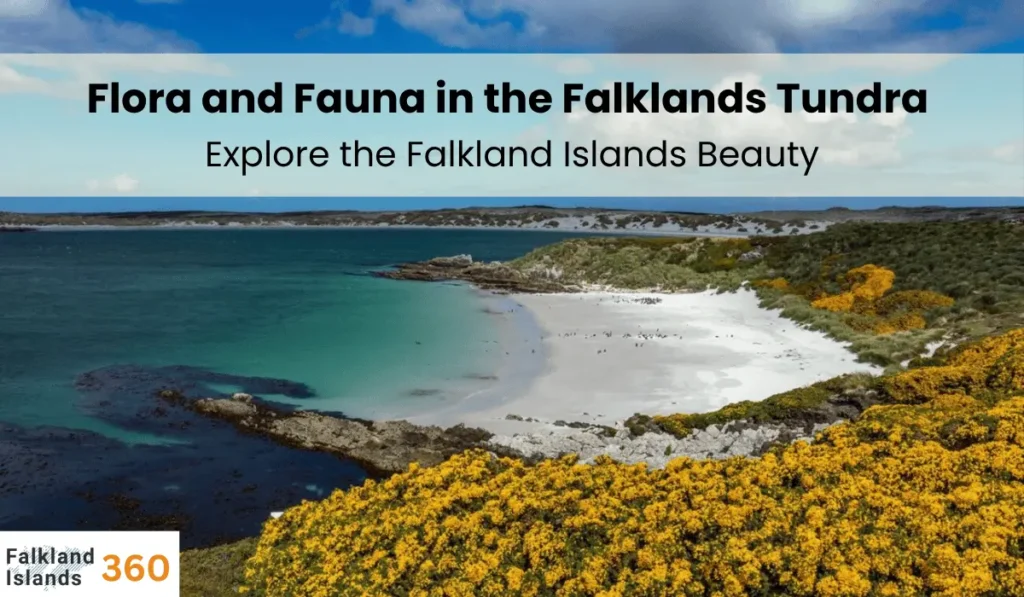The Falkland Islands are a hidden gem of biodiversity, located in the South Atlantic Ocean. These remote islands, known for their tundra-like landscapes and dramatic coastline, boast a unique array of plant and animal life perfectly adapted to the harsh yet stunning environment. Visiting this ecological haven offers an unparalleled opportunity to connect with nature while discovering the wonders of Falkland Islands wildlife.
Below, we’ll explore the remarkable fauna and flora that thrive in the Falklands’ tundra, providing you with an inspiring guide for your next Falkland Islands travel adventure.
The Rugged Beauty of the Falklands Tundra
The Falkland Islands’ tundra environment is characterised by its rolling landscapes, windswept grasslands, and rocky outcrops. This region, shaped by intense winds and a cool climate, is one of the most biologically intriguing areas in the world. The Falkland Islands geography sustains one of nature’s more resilient ecosystems, where only the most adaptable species survive and flourish.
For nature enthusiasts, a trip to the Falklands presents an exciting chance to learn about the unique dynamics of this ecosystem, which acts as home to some of the most fascinating flora and fauna on Earth. Whether you marvel at the Falkland Islands animals or stop to appreciate resilient plant species, this remote destination is your gateway to a secluded wonderland.
Unique Fauna in the Falklands Islands Tundra
The Falkland Islands are renowned for their distinct and resilient wildlife. Many species here exist nowhere else, making it an ideal location for learning about adaptation and survival. Key highlights of Falkland Islands wildlife await visitors:
Birds of the Falkland Islands
The islands are a birdwatcher’s paradise. From striking waterfowl to scavenging raptors, avian life dominates the tundra terrain. One of the icons of Falkland Islands animals is the Falkland Steamer Duck, a flightless bird endemic to the islands. Known for its powerful swimming, this duck is often spotted along shorelines, foraging in the rich coastal waters.
Another captivating species is the Striated Caracara, one of the world’s rarest birds of prey. These highly intelligent scavengers frequent exposed cliffs and rocky outcrops, displaying behaviour that has fascinated biologists for decades.
Of course, no trip to the Falklands would be complete without encountering the islands’ famous black-and-white residents. The Falkland Islands penguins are a major highlight, with five species calling these islands home, including the charismatic Gentoo and the majestic King Penguin.
Mammals and Marine Life
Beyond bird species, the tundra and surrounding waters host a variety of other creatures. Visitors can catch glimpses of seals sunbathing along the beaches. The South American Sea Lion is a regular sight, and, during certain seasons, pods of dolphins and whales can be seen around the islands.
With such rich biodiversity, the Falklands offer visitors a front-row seat to unique Falkland Islands wildlife and encounters that reaffirm the delicate balance of the natural world.
The Resilient Flora of the Falkland Islands
Though less well-known than the islands’ animal life, the Falkland Islands’ flora is equally remarkable. The tundra-like vegetation is adapted to cold temperatures, strong winds, and nutrient-poor soil—a testament to nature’s resilience.
Cushion Plants and Tussac Grass
One of the standout plant types in the Falklands is cushion plants. These low-growing plants form round, compact shapes, helping them resist the harsh winds. Species like Azorella selago are common and add both texture and intrigue to the tundra landscape.
A signature feature of the area is Tussac Grass, which grows in dense swathes in coastal areas. This hardy grass serves as critical habitat and shelter for some of the Falkland Islands animals, including penguins and insects. Tussac Grass also plays a vital role in preventing soil erosion, underlining its importance to local ecosystems.
A Splash of Colour in the Tundra
While resilient grasses dominate, vibrant wildflowers also brighten this tough environment during the warmer months. Falkland Forget-Me-Nots, Yellow Flame flowers, and tiny orchids emerge as bursts of colour, attracting pollinators and offering nature lovers unforgettable photo opportunities.
Traveler’s Guide to the Falklands Tundra
The allure of the Falkland Islands’ wildlife and flora makes it a prime destination for eco-tourism. With a thoughtful approach to exploration, visitors can enjoy the natural treasures of the islands while helping to preserve their delicate ecosystem.
Where to Explore
The Falkland Islands map is dotted with locations where wildlife and plants thrive. Near Port Stanley Falkland Islands, tourists can visit areas like Gypsy Cove, where Magellanic penguins nest near tussac grass. For a more rugged tundra experience, head to remote locations like Sea Lion Island, where a diverse array of Falkland Islands animals make their home.
Tips for Observing Flora and Fauna
To fully enjoy Falkland Islands tourism while minimising environmental impact, adhere to the following tips:
- Stick to marked trails to avoid disturbing habitats.
- Carry binoculars to safely observe wildlife from a distance.
- Visit designated nature reserves, many of which include guides who offer further Falkland Islands information about the species you encounter.
Experiencing the Falklands Beyond Nature
Exploring the natural environment is an adventure in itself, but many visitors also enjoy local culture in Port Stanley Falkland Islands. The town provides a convenient base for learning more about Falkland Islands geography or planning eco-tours into the tundra.
A Unique and Fragile Ecosystem
The Falkland Islands’ tundra ecosystem is a breathtaking example of nature’s ability to adapt. Home to a patchwork of resilient plants and hardy animals, this landscape captures the imagination of scientists, adventurers, and everyday travellers. From iconic Falkland Islands penguins to low-growing cushion plants, the islands are alive with life that thrives against all odds.
Next time you plan a trip inspired by biodiversity and untamed beauty, consider the Falkland Islands travel possibilities. With its unique ecosystem and responsible Falkland Islands tourism efforts, this destination will leave you with an enduring appreciation for the wonders of our natural world.



